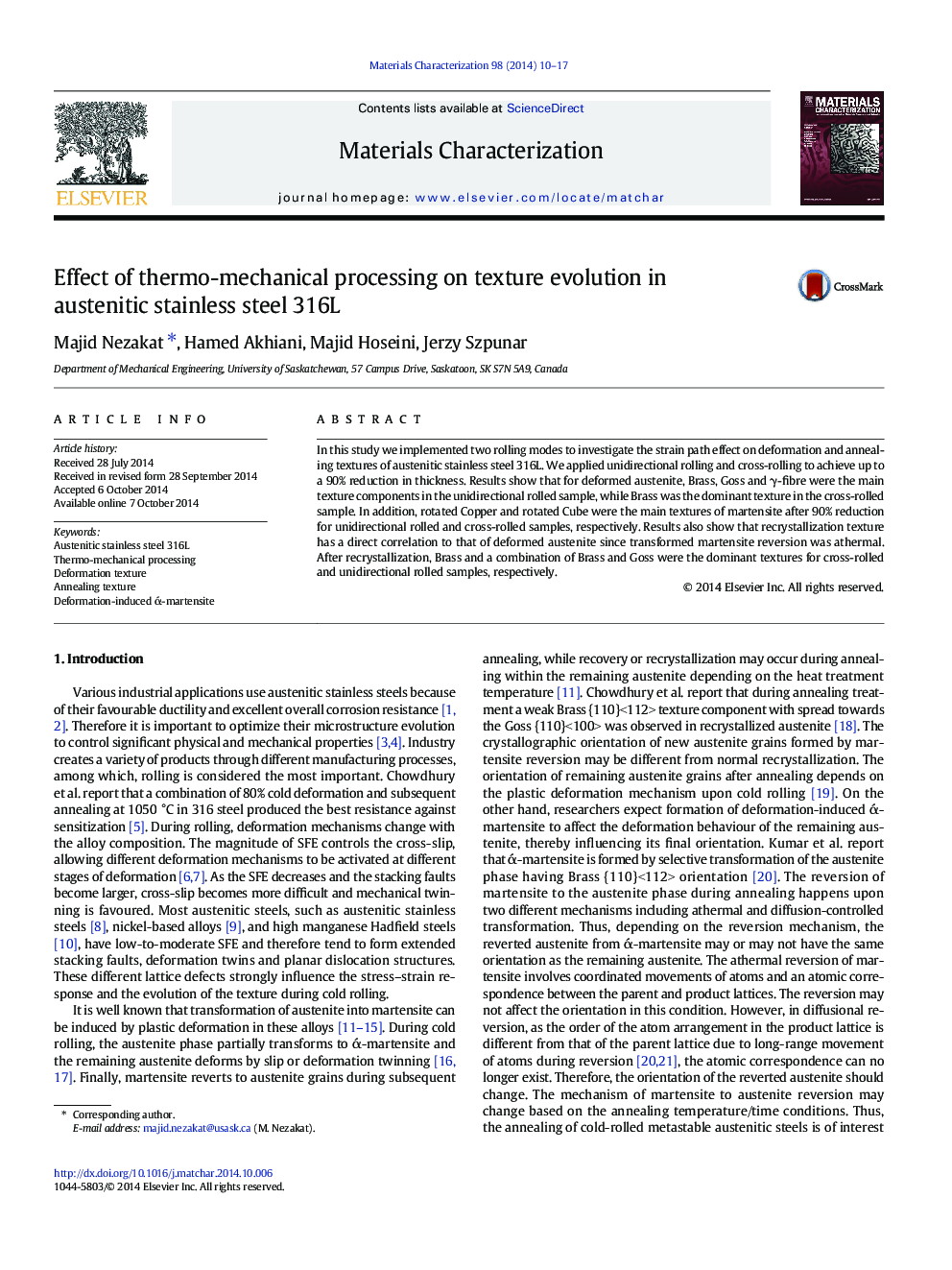| Article ID | Journal | Published Year | Pages | File Type |
|---|---|---|---|---|
| 7970632 | Materials Characterization | 2014 | 8 Pages |
Abstract
In this study we implemented two rolling modes to investigate the strain path effect on deformation and annealing textures of austenitic stainless steel 316L. We applied unidirectional rolling and cross-rolling to achieve up to a 90% reduction in thickness. Results show that for deformed austenite, Brass, Goss and γ-fibre were the main texture components in the unidirectional rolled sample, while Brass was the dominant texture in the cross-rolled sample. In addition, rotated Copper and rotated Cube were the main textures of martensite after 90% reduction for unidirectional rolled and cross-rolled samples, respectively. Results also show that recrystallization texture has a direct correlation to that of deformed austenite since transformed martensite reversion was athermal. After recrystallization, Brass and a combination of Brass and Goss were the dominant textures for cross-rolled and unidirectional rolled samples, respectively.
Related Topics
Physical Sciences and Engineering
Materials Science
Materials Science (General)
Authors
Majid Nezakat, Hamed Akhiani, Majid Hoseini, Jerzy Szpunar,
